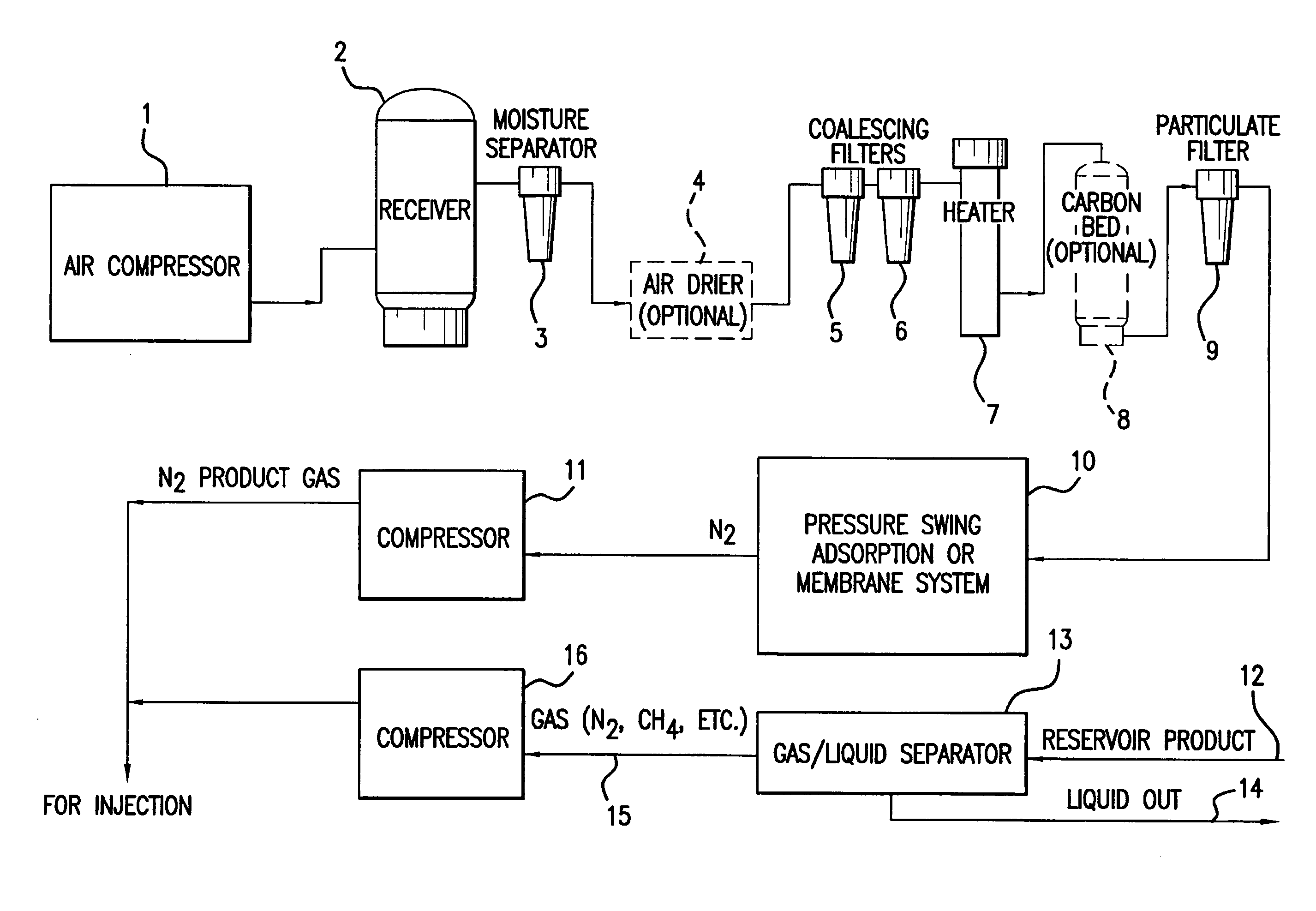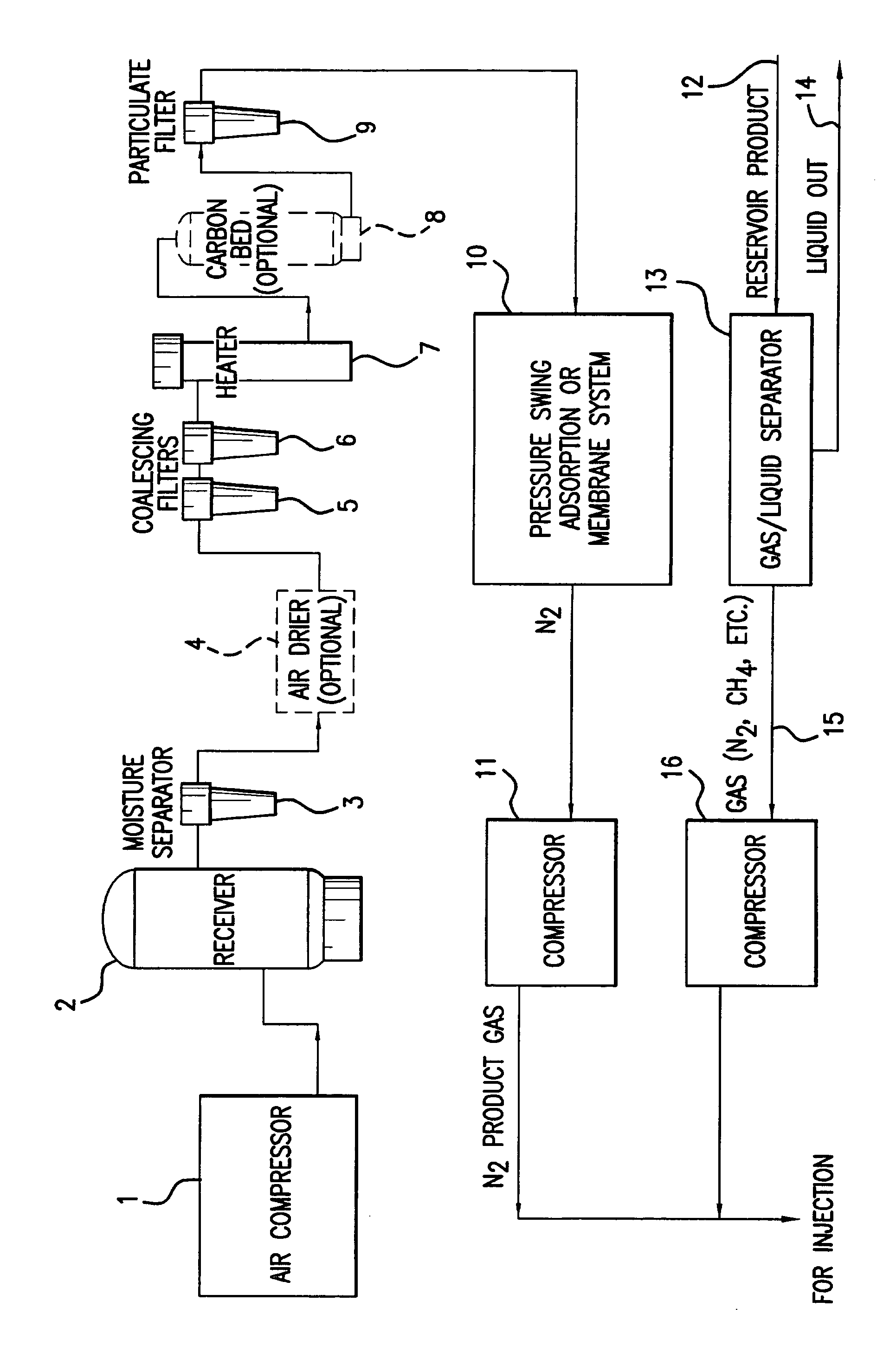Oil recovery using non-cryogenically produced nitrogen and off-gas recycling
- Summary
- Abstract
- Description
- Claims
- Application Information
AI Technical Summary
Benefits of technology
Problems solved by technology
Method used
Image
Examples
Embodiment Construction
[0018] In this specification, the terms “oil well”, “formation”, and “reservoir” are used interchangeably to identify a natural underground source of liquid oil.
[0019] The FIGURE provides a schematic diagram of the components of a system used to practice the present invention. The system is preferably physically located at or near the site of an oil well.
[0020] Air compressor 1 takes ambient air and compresses it. The compressed air passes through receiver 2 and moisture separator 3. The air may then pass through an optional air dryer 4. The air passes through coalescing filters 5 and 6, and heater 7. Air leaving the heater may pass through an optional carbon bed 8, and then through particulate filter 9.
[0021] Air leaving the particulate filter enters air separator 10, which may be either a membrane system or a pressure swing adsorption (PSA) unit. The air separator converts the incoming air into two streams, one which is oxygen-enriched and the other which is oxygen-depleted (ni...
PUM
 Login to View More
Login to View More Abstract
Description
Claims
Application Information
 Login to View More
Login to View More - R&D
- Intellectual Property
- Life Sciences
- Materials
- Tech Scout
- Unparalleled Data Quality
- Higher Quality Content
- 60% Fewer Hallucinations
Browse by: Latest US Patents, China's latest patents, Technical Efficacy Thesaurus, Application Domain, Technology Topic, Popular Technical Reports.
© 2025 PatSnap. All rights reserved.Legal|Privacy policy|Modern Slavery Act Transparency Statement|Sitemap|About US| Contact US: help@patsnap.com


